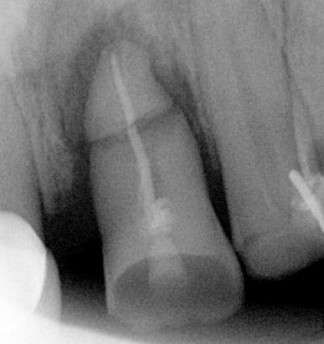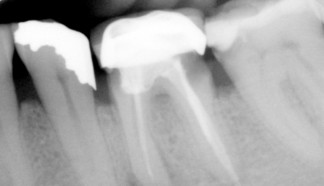Need an Appointment?
If you'd like to book an appointment with the dentist at Seymour Dental then contact us, or call us in Dulwich Hill, Sydney on (02) 9564 2397.
Periapical means peri-prefix meaning around or about, apical- apex of – in this case the tooth. This x-ray is also called intra-oral. So what this means the x-ray film or sensor is placed in the mouth. Generally a view of the whole tooth and the surrounding bone is a typical image. As the sensor is close to the object of interest, this image obtained is very accurate. It is more accurate than an OPG where the sensor is further away.
Why do we take xrays?
Essentially it’s to gain information, confirmation, and record keeping.
Dentists are often known as Oral Sherlock Holmes (I just made that up, but I hope it catches on! And it’s the title of a future newsletter). Before any treatment can begin we need a diagnosis. Primum non nocere is a latin phrase that means “First, do no harm”. If there is no confirmed cause of a symptom then no valid treatment can commence. This x-ray is like Sherlock Holmes’ magnifying glass but only better. This one has computing power behind it. When a digital intra-oral xray is taken, the computer converts the sensor reading of the xray exposure to digital information. The software enables a variety of manipulation of the image, such as magnification, take measurements, comparison with past images and much more.
When a person first visits the surgery, SeymourDental has an expression (that has been borrowed from someplace forgotten) never treat a stranger.
We need to gather information as a starting point. This means medical history, recording the mouth as it is on the day. Firstly what can be seen such as number of teeth, fillings, crowns, implants, dentures and then what is “unseen”. This is one of dentistry’s greatest tools, the x-ray. The intra-oral x-ray will determine which teeth have already been root filled and bone levels around specific teeth to determine the need for gum treatment. In children to see if all the teeth are present when a tooth is delayed in coming through. We gather the information to make sure everything is all right and normal; and not find problems!
So now that your are not a stranger to the practice any problems or concerns can be better diagnosed. So the next frequent use is to aid in the diagnosis of the cause of pain and other symptoms.
After using other methods to localise the area of concern an x-ray is used to confirm if there is an infection at the end of a tooth, any decay present, bone defects or is there is a broken tooth or root. Cysts and other less common lesions may be picked up as well. The x-ray cannot determine the health of the nerve inside the tooth. It shows the space the nerve occupies but not the actual tissue. It cannot show a crack in the tooth that does not lie in the same direction of the x-ray beam. So like a detective we need to use other clues. This includes tapping the teeth, cold tester and pressure testers to reproduce the pain. Referred is pain (a future article) is the curse of the dentist. As the pain worsens it starts to appear to affect other teeth and even the opposite jaw. Good records can often help in the diagnosis by comparing past x-rays.
This continues next week: HOW OFTEN ARE XRAYS TAKEN & WHY – PERIAPICALS (The Treatment)
 479 Marrickville Road
479 Marrickville Road


